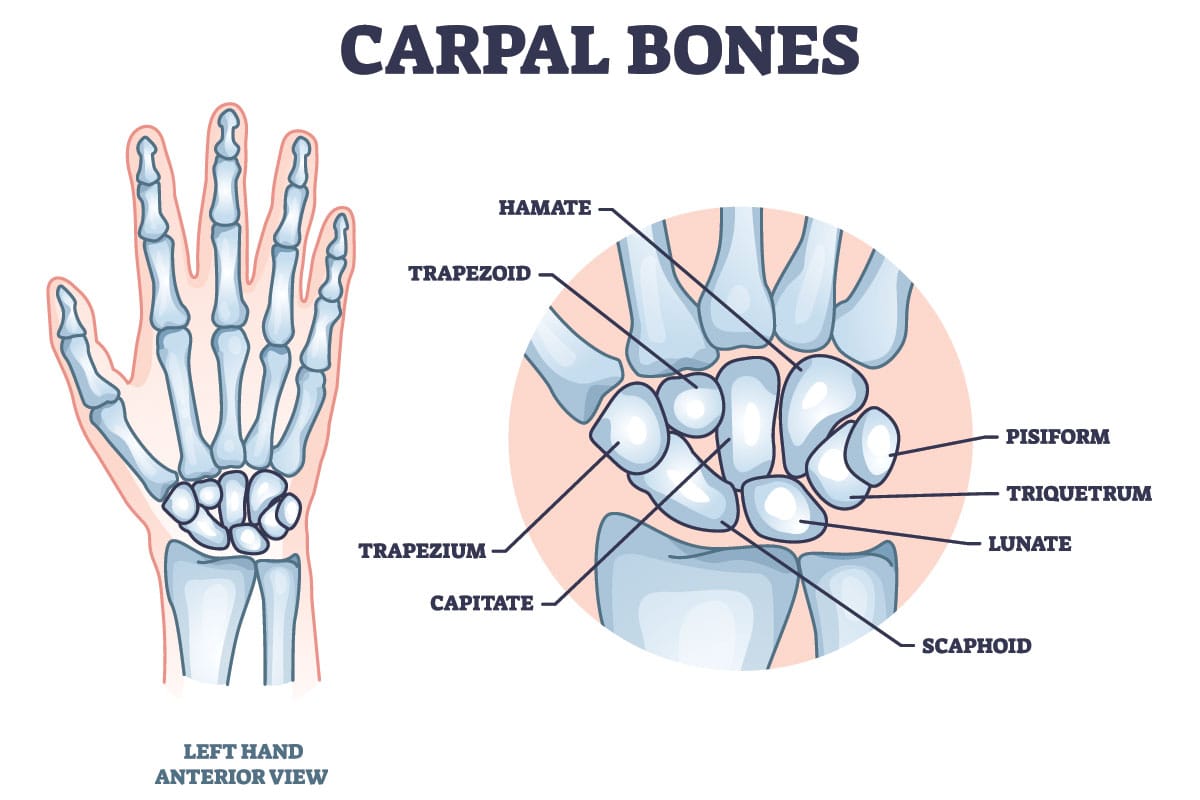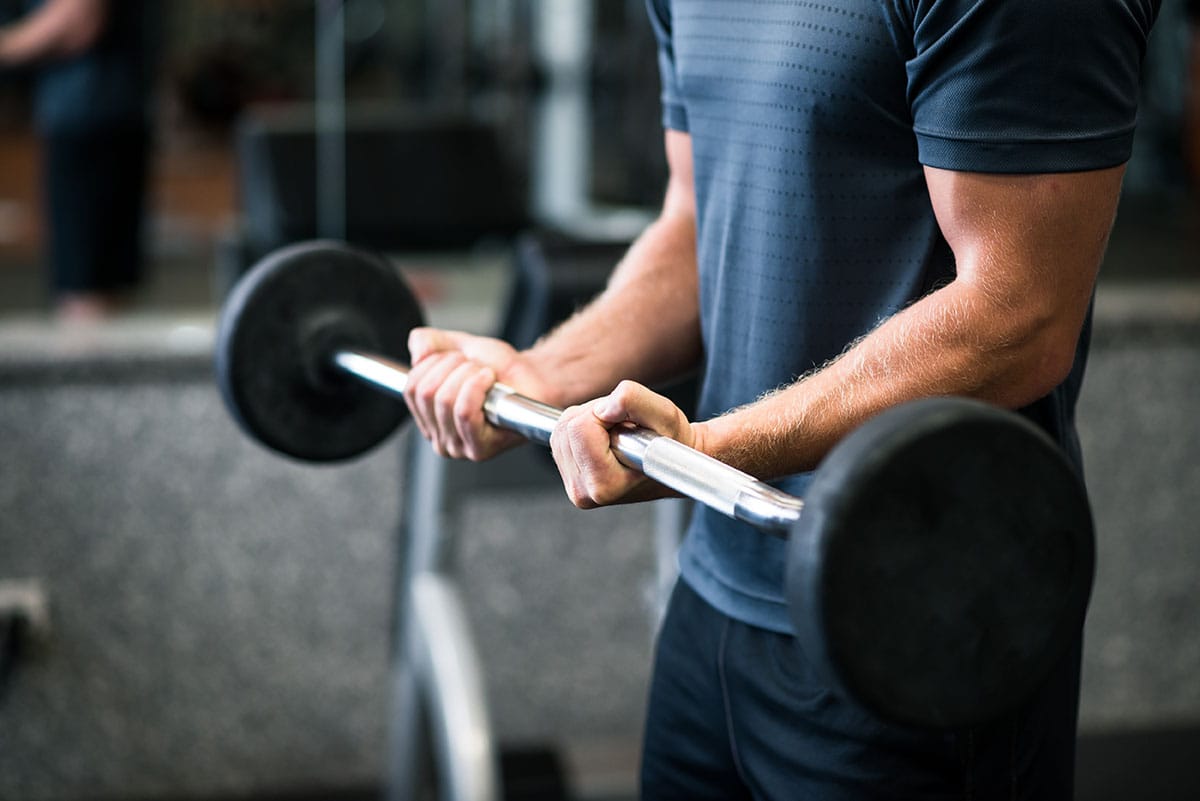Why Are My Wrists So Small? 8 Reasons
Having a small wrist doesn't mean you are not strong or healthy. It's mostly because of genetics, body composition, nutrition, or hormones...
Ever caught yourself thinking, "Why are my wrists so small?" Trust me, you're not the only one. A lot of people wonder about their wrist size, especially if they seem a bit on the skinny side compared to the rest of their body.
This can be a point of insecurity for many people. So, let’s dive into what could be going on and understand the physiological factors that cause skinny wrists to happen. While we’re at it, we’ll also recommend some exercises that can help grow your forearm muscles.
1. It’s All in the Genes
First off, let’s talk genetics. If your wrists are small, it’s probably something you inherited. Just like your eye color or how tall you are, forearm genetics is often passed down through the family. If you have small wrists, chances are your parents or grandparents had it, too.
2. Bone Structure Matters
Your bone structure plays a big part here. People with smaller bone frames usually have smaller wrists. And hey, that's not a bad thing at all. It’s just how your body is built. Small wrists don’t mean you’re weak or unhealthy.
Think of it this way: just as some people have petite feet or slender fingers, skinny wrists are simply a part of your unique body. It’s fascinating how our bodies can vary so much, even within the same family. Next time you’re at a family gathering, take a look around: you might notice that small wrists run in the family.

3. Your Body Composition
Next up, let’s consider your overall body composition. Folks with lower body fat percentages tend to have more noticeable bones, including the ones in their wrists. If you’re more lean than bulky, your wrists might stand out more compared to someone with a bit more body fat.
4. Muscles and Wrists
Now, here’s the thing about muscle mass. Even if you’re super muscular, the muscles around your wrists are usually minimal. The forearm muscles don’t extend much into the wrist area, so bulking up your forearms won’t make your wrists much bigger. But hey, regular strength training can still make your wrists look and feel stronger.
For example, athletes and bodybuilders often have well-defined forearms, but their wrists still appear relatively small. This is because the muscle bulk is concentrated in the forearms, not the wrists. So, while you can start a dirty bulk and strengthen the muscles around your wrists, don’t expect a dramatic increase in wrist size.

5. Eating Right
Nutrition also plays a role in bone health. If your diet is lacking in essential nutrients like calcium, vitamin D, and protein, it can affect your bone density and strength. So, make sure you’re eating a balanced diet to support healthy bones, even if it won’t drastically change your wrist size.
Calcium and Vitamin D Are Key
Calcium and vitamin D are super important for bone health. Calcium helps build and maintain strong bones, while vitamin D helps your body absorb calcium better. You can find these nutrients in dairy products, leafy greens, and fortified cereals. If you think you’re not getting enough, talk to a healthcare provider about supplements.
Imagine your bones as a house – calcium is the bricks, and vitamin D is the mortar that holds everything together. Without enough of either, your bones might not be as strong as they could be. So, keep an eye on your diet and make sure you’re getting enough of these crucial nutrients.

6. Hormones Play a Part
Hormones can also influence bone growth and development. During puberty, growth hormones are crucial for bone development. If there were any hormonal imbalances during your growing years, it could affect the size and strength of your bones, including your wrists.
Thyroid Check
Thyroid hormones are essential for bone growth and metabolism. If you have an underactive thyroid (hypothyroidism) or an overactive thyroid (hyperthyroidism), it can affect your bones. A simple blood test can tell you if your thyroid is functioning properly.
For instance, hypothyroidism can lead to weaker bones because your body isn’t producing enough thyroid hormone. On the flip side, hyperthyroidism can cause bone loss because your body is producing too much thyroid hormone. If you suspect any thyroid issues, it’s worth getting checked out.
7. Get Moving
Regular physical activity, especially weight-bearing exercises, can help strengthen your bones. This might not change the size of your wrists much, but it can improve your overall bone density and strength. Exercises like push-ups, wrist curls, and resistance training are great for your wrists.
Specific Wrist Exercises
There are also exercises specifically for your wrists that can help improve their strength and appearance. Some good ones include:
- Wrist Curls: Use a light dumbbell to perform wrist curls, which strengthen the forearm muscles.
- Reverse Curls: This targets the muscles on the opposite side of the forearm.
- Wrist Rotations: Rotate your wrists in circular motions to improve flexibility and strength.
- Pinwheel Curls: If you want strong arms overall, pinwheel curls might be an excellent choice that works both forearm and biceps at the same time.
Incorporating these exercises into your routine can make a noticeable difference in the strength and stability of your wrists. Plus, they’re easy to do at home with minimal equipment.

Could It Be a Medical Condition?
Sometimes, small wrists might be due to underlying medical conditions. Issues like osteoporosis, osteopenia, and other bone density disorders can affect the size and strength of your bones. If you’re experiencing pain or weakness in your wrists, it’s best to check with a healthcare provider.

Osteoporosis and Osteopenia
Osteoporosis is a condition where your bones become weak and more prone to fractures. It’s common in older adults but can affect younger people too. Osteopenia is like a milder version of osteoporosis. Both conditions require a diet rich in calcium and vitamin D, along with regular exercise, to manage and prevent progression.
Imagine your bones as a tree. Osteoporosis is like the tree becoming brittle and more likely to break in a storm. Osteopenia is like the tree starting to lose its strength but not quite at the breaking point. Both conditions need attention to ensure your bones stay strong and healthy.
The Psychological Side
It’s true that having small wrists can sometimes affect how you feel about yourself. Society often equates larger, more muscular wrists with strength and fitness, which can make those with smaller wrists feel a bit self-conscious. But remember, wrist size doesn’t define your health, strength, or worth.
Embrace Body Positivity
Body positivity is all about accepting and loving your body as it is. Focus on what your body can do rather than how it looks. Engage in activities that make you feel strong and healthy, and surround yourself with people who appreciate you for who you are.
Think about all the amazing things your body can do – from lifting weights to typing out an email. Your wrists, no matter their size, are part of what makes you unique. Embrace them and focus on your overall health and well-being.
Wrapping It Up
So, why are your wrists so small? It’s probably a mix of genetics, body composition, nutrition, hormones, and lifestyle. While you can’t drastically change the size of your wrists, you can make sure they’re strong and healthy. Embrace your unique body structure and focus on overall health and well-being.
If you’re worried about your wrist size or have any symptoms that cause discomfort, it’s always a good idea to talk to a healthcare professional. They can give you personalized advice and check for any underlying health issues.
Remember, having small or skinny wrists is just one part of what makes you unique. Celebrate your individuality and take pride in maintaining a healthy, active lifestyle.
Are you ready to level up your workout routine? We’ve made it simple to work on customized fitness plans or to introduce a little friendly competition to your fitness community by sharing exercises with your friends. Get started for free through the Flex fitness app.
Related articles


Get fit with Flex
Build muscle & lose weight fast for free.
Available on iPhone + Apple Watch





